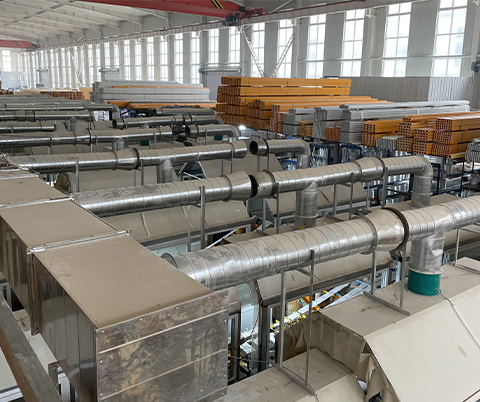loading...
- No. 9, Xingyuan South Street, Dongwaihuan Road, Zaoqiang County, Hengshui, Hebei, China
- admin@zjcomposites.com
- +86 15097380338
- Welcome to visit our website!
Enhancing Security and Performance with FRP Guardrail Solutions for Modern Applications
Understanding FRP Guardrails A Comprehensive Overview
Fiber Reinforced Polymer (FRP) guardrails have gained significant attention in recent years due to their advantageous properties and applications in various industries. These structures are designed to safeguard areas, ensuring safety while maintaining aesthetic appeal. In this article, we will explore what FRP guardrails are, their benefits, applications, and considerations for their use.
What are FRP Guardrails?
FRP guardrails are safety barriers made from fiber-reinforced polymer materials, which are composites primarily consisting of a polymer matrix embedded with fibers, such as glass, carbon, or aramid. This combination results in a lightweight yet robust material that can withstand harsh environmental conditions. FRP guardrails can be designed for various applications, including highways, bridges, and industrial sites.
Benefits of FRP Guardrails
1. Lightweight and High Strength One of the most remarkable properties of FRP is its high strength-to-weight ratio. This makes installation easier and reduces the burden on supporting structures, which is particularly important in areas with weight restrictions.
2. Corrosion Resistance Unlike traditional materials such as steel or wood, FRP is highly resistant to corrosion, making it ideal for use in environments exposed to moisture, chemicals, or saltwater. This longevity translates into reduced maintenance costs and increased safety over time.
3. Durability FRP materials exhibit excellent resistance to weathering, UV radiation, and thermal expansion. This ensures that guardrails made from FRP maintain their integrity and appearance for extended periods, even in harsh conditions.
4. Aesthetic Flexibility FRP can be manufactured in various colors and designs, allowing for customization to fit the aesthetic requirements of different environments. This aspect can be particularly beneficial in urban settings where visual appeal is crucial.
5. Environmental Considerations FRP materials can be produced with a reduced carbon footprint compared to traditional materials. Additionally, many FRP products are recyclable, which aligns with the growing trend of sustainability in construction.
Applications of FRP Guardrails
FRP guardrails have found their niche in several sectors
frp guardrail

- Transportation In highways and bridges, FRP guardrails provide critical safety features, protecting pedestrians and vehicles from falling off edges or entering hazardous zones.
- Industrial Facilities In factories and warehouses, FRP guardrails can delineate work areas, ensuring the safety of workers and minimizing accident risks.
- Coastal and Marine Structures Due to their corrosion resistance, FRP guardrails are ideal for piers, docks, and other marine applications, where traditional materials may fail.
- Residential Areas In residential settings, FRP guardrails can be utilized in decks and patios to enhance safety without compromising aesthetics.
Considerations for Use
While FRP guardrails offer numerous benefits, there are also some considerations to keep in mind.
- Cost The initial cost of FRP guardrails can be higher compared to traditional materials. However, the long-term savings on maintenance and replacement often justify the investment.
- Installation Proper installation by trained professionals is crucial to ensure the effectiveness and safety of the guardrails.
- Regulatory Compliance It is essential to ensure that FRP guardrails meet local regulations and safety standards for their specific application.
Conclusion
FRP guardrails represent an innovative solution in the realm of safety and infrastructure. Their lightweight nature, durability, corrosion resistance, and aesthetic flexibility make them suitable for a wide array of applications. As communities continue to prioritize safety and sustainability, the use of FRP materials will likely expand, offering a resilient alternative to traditional guardrail systems. With continued advancements in technology and materials science, the future of FRP guardrails looks promising, paving the way for safer environments in both urban and industrial settings.
-
Transform Your Spaces with FRP Grating SolutionsNewsNov.04,2024
-
The Versatility and Strength of FRP RodsNewsNov.04,2024
-
The Excellence of Fiberglass Water TanksNewsNov.04,2024
-
The Benefits of FRP Grating for Your ProjectsNewsNov.04,2024
-
Elevate Your Efficiency with FRP Pressure VesselsNewsNov.04,2024
-
Welcome to the World of FRP Pressure VesselsNewsOct.12,2024
-
Unveiling the Future of Filtration: Why FRP Filter Vessels are a Game ChangerNewsOct.12,2024
